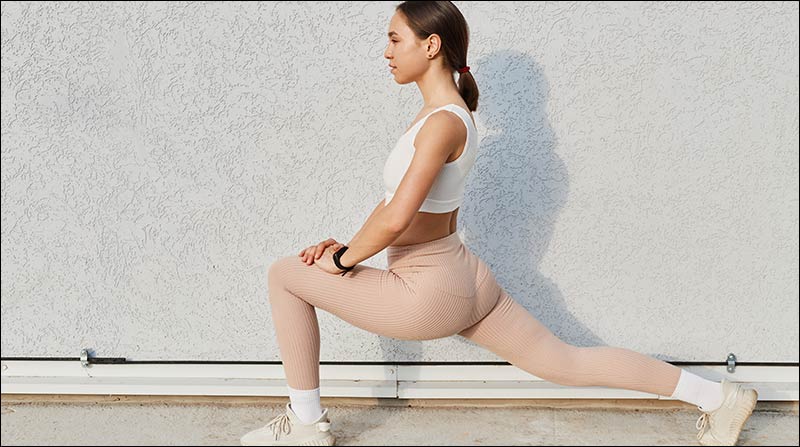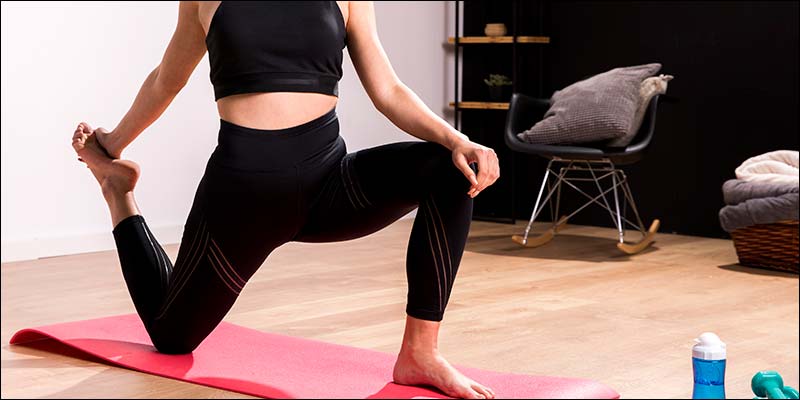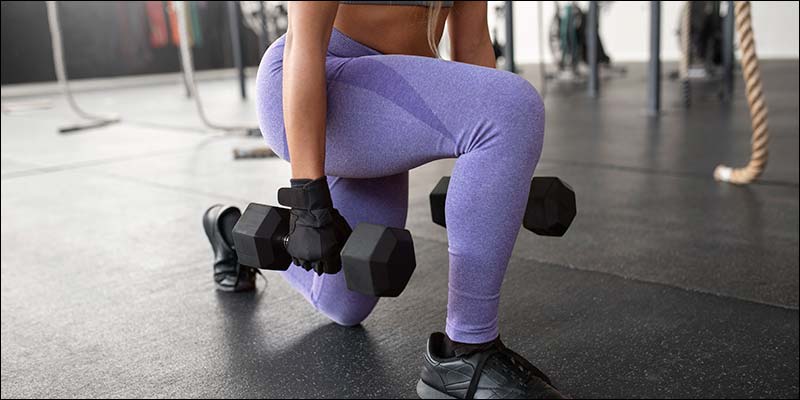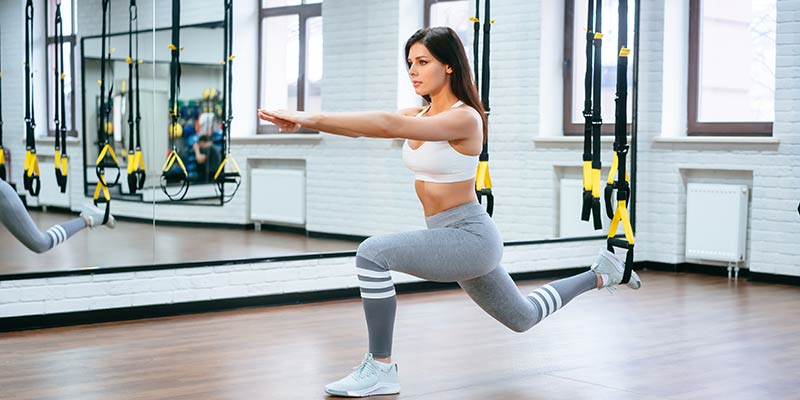Are you looking to sculpt your legs, tone your glutes, and enhance your overall lower body strength? Look no further than incorporating lunge workout routine! These dynamic exercises are renowned for their ability to target multiple muscle groups simultaneously, offering a comprehensive lower body workout that can yield impressive results. Let’s delve into the details of lunge workout, explore their variations, benefits, proper form, and much more.
What Are Lunges?

Lunges are versatile exercises designed to strengthen the lower body by engaging various muscles, including the quadriceps, hamstrings, glutes, and calves. This functional exercise, performed by stepping forward or backward, emphasizes unilateral movement, promoting balance and stability.
Types of Lunges for Optimal Results
- Forward Lunges: Begin by stepping forward with one leg and lowering your body until both knees are bent at a 90-degree angle. Push back to the starting position and alternate legs.
- Reverse Lunges: Instead of stepping forward, step backward while maintaining an upright posture. Lower your body until both knees form a 90-degree angle before returning to the starting position.
- Walking Lunges: Perform continuous lunges by taking steps forward with each lunge, effectively engaging different muscles and enhancing cardiovascular endurance.
- Lateral Lunges: Step to the side, bending the knee while keeping the other leg straight. Return to the starting position and repeat on the other side to target inner and outer thigh muscles.
Lunge Exercise Benefits

By integrating lunges into your fitness routine, you can reap a multitude of benefits:
Enhanced Fat Loss
Lunge variations engage major leg muscles, aiding calorie burn, fat loss, and muscle growth. Training each leg separately doubles reps, making workouts more engaging and effective. Lunges are ideal for muscle building and weight loss.
Core Strengthening Minus Crunches
Lunges, as unilateral lower body exercises, challenge balance, engaging stabilizing muscles, including the core. Your abs, obliques, and lower back work harder to maintain balance and spinal alignment. While focusing on legs, lunges offer substantial core benefits.
Improved Muscle Growth & Definition
Unilateral lunges address strength imbalances often caused by dominant sides, promoting balanced muscle development. The exercise’s extensive range of motion effectively targets leg muscles, enhancing definition.
Enhanced Strength
By rectifying muscle imbalances and promoting symmetrical development, lunges improve overall lifting technique and strength. Single-leg strength translates to increased bilateral strength.
Heightened Athletic Performance
Lunges contribute to better hip, knee, and core stability, enhancing balance, coordination, and agility, thereby improving overall athleticism.
Perfecting Your Lunge Form
Achieving the right form is crucial for maximizing the effectiveness of your lunges while minimizing the risk of injury. Follow these steps:
- Maintain Proper Posture: Keep your upper body upright, shoulders back, and core engaged.
- Step Correctly: Take a big enough step forward or backward, ensuring your knee doesn’t extend past your toes.
- Lower Your Body: Bend both knees to about a 90-degree angle, ensuring your front knee stays aligned with your ankle.
- Push Back: Use the heel of your front foot to return to the starting position, engaging your glutes and hamstrings.
Lunge Workout with Weights

Incorporating dumbbell lunges into your home workout regimen offers a fantastic opportunity to enhance muscle growth, enhance balance, and engage multiple muscle groups simultaneously.
For body-weight lunges, aim for three to four sets of 15-20 reps per leg. Beginners should initiate with 2-3 sets of 10-12 reps per leg. If incorporating external resistance like a barbell or dumbbells, opt for a weight enabling you to complete 12-15 lunges per leg across 3-4 sets.
Lunges primarily target leg muscles, encompassing the quadriceps, hamstrings, and glutes. Fortifying these muscles enhances leg strength, facilitating everyday activities such as walking, running, and stair climbing.
Commence with one set if you’re new, progressively increasing as you build strength. For those tackling challenging weights to enhance strength endurance, opt for fewer reps per set, typically two to four sets of 8 to 12 repetitions.
Tips for a More Intensive Lunge Workout
- Add Resistance: Incorporate dumbbells, kettlebells, or resistance bands to increase the difficulty and stimulate muscle growth.
- Vary the Tempo: Experiment with slow and controlled movements or plyometric lunges for a more challenging workout.
- Focus on Depth: Increase the range of motion gradually, aiming for deeper lunges to engage muscles more intensely.
Lunge Workout for Beginners
Forward lunges stand out as one of the most potent lower body workout routines, effectively engaging and sculpting your quadriceps, glutes, hamstrings, and calf muscles, while also involving your abs and lower back for stability.
Here’s how to execute the movement:
- Begin by standing with your feet hip-width apart.
- Take a sizable step forward with one leg.
- Maintain the bulk of your weight on your front foot as you lower your hips, ensuring the front foot stays flat and the back heel is raised.
- Descend until your rear knee nearly touches the floor, while the front knee aligns directly above the ankle, creating a 90° bend in both knees.
- Propel yourself back up to the initial position by pushing through the heel of your front foot.
Start Slow and Steady
Here’s another helpful tip for beginners: Begin with shorter forward steps, which reduces the range of motion. Then, gradually increase the length of your forward step and lower yourself as far as your mobility permits. With practice, you’ll become more at ease with performing them.
Conclusion
In conclusion, Lunge Workout offer an incredible array of benefits for strengthening and toning your lower body. Whether you’re a fitness enthusiast or a beginner looking to enhance your workout routine, incorporating different variations of lunges can be a game-changer. Remember, mastering the correct form is paramount to achieve optimal results while preventing injuries. So, lace-up your sneakers, grab your determination, and start lunging your way towards a stronger, more sculpted lower body today!
FAQs
Q1. What are lunges good for?
Lunges stand as a potent exercise, capable of sculpting and fortifying nearly every muscle in the lower body, including the hips, glutes, quads, hamstrings, and calves. They contribute significantly to bolstering your lower body, enhancing core strength, building muscle tissue, and assisting in achieving the ideal buttocks you’ve been aiming for.
Q2. What is lunges exercises?
The lunge represents a bodyweight exercise that effectively engages the leg muscles. More precisely, it focuses on the quadriceps and hamstring muscles in the thigh, the gluteal muscles in the buttocks, and to a lesser extent, the muscles in the lower leg.
Q3. What muscles do the lunge work?
The lunge workout builds strength in the leg muscles, particularly the gluteus maximus, hamstrings, quadriceps, and the calves (gastrocnemius/soleus). Apart from being key movers, the hamstrings and gastrocnemius also act as dynamic stabilizers at the knee joint during the lunge motion, enhancing its overall efficacy.


I liked it as much as you did. Even though the picture and writing are good, you’re looking forward to what comes next. If you defend this walk, it will be pretty much the same every time.
Well written post! This is a really fantastic post, and we will link to it on our website. Continue your fantastic writing.
My brother suggested I might like this website He was totally right This post actually made my day You cannt imagine just how much time I had spent for this information Thanks